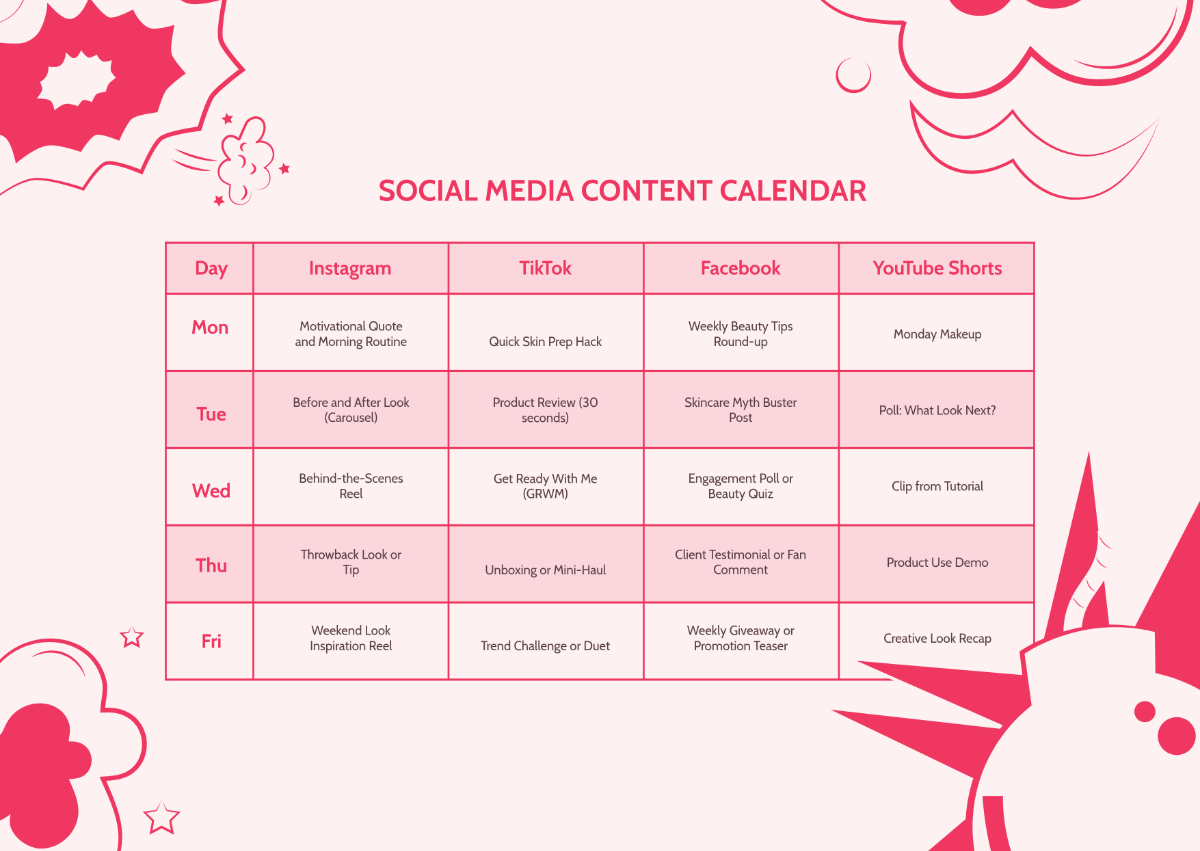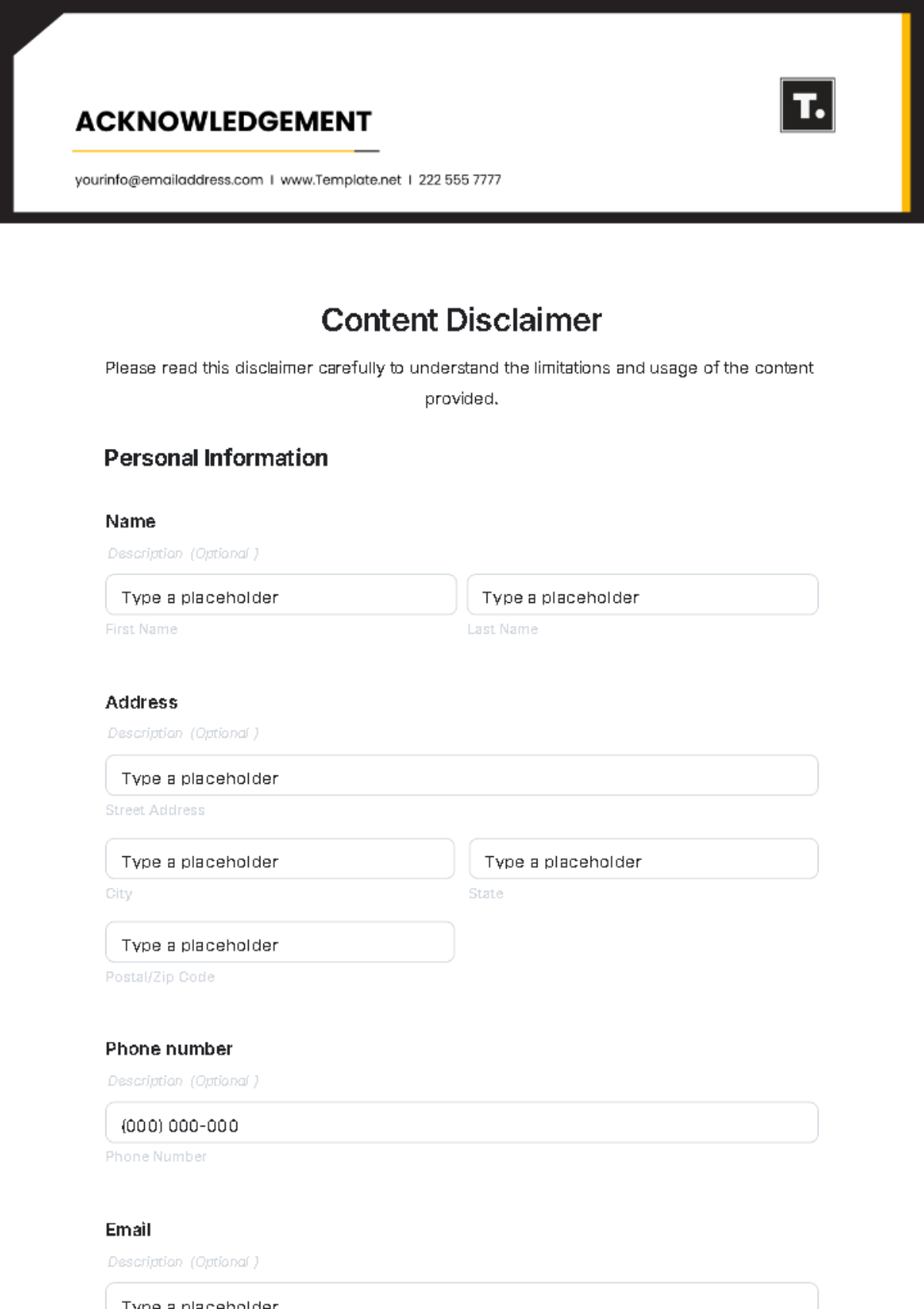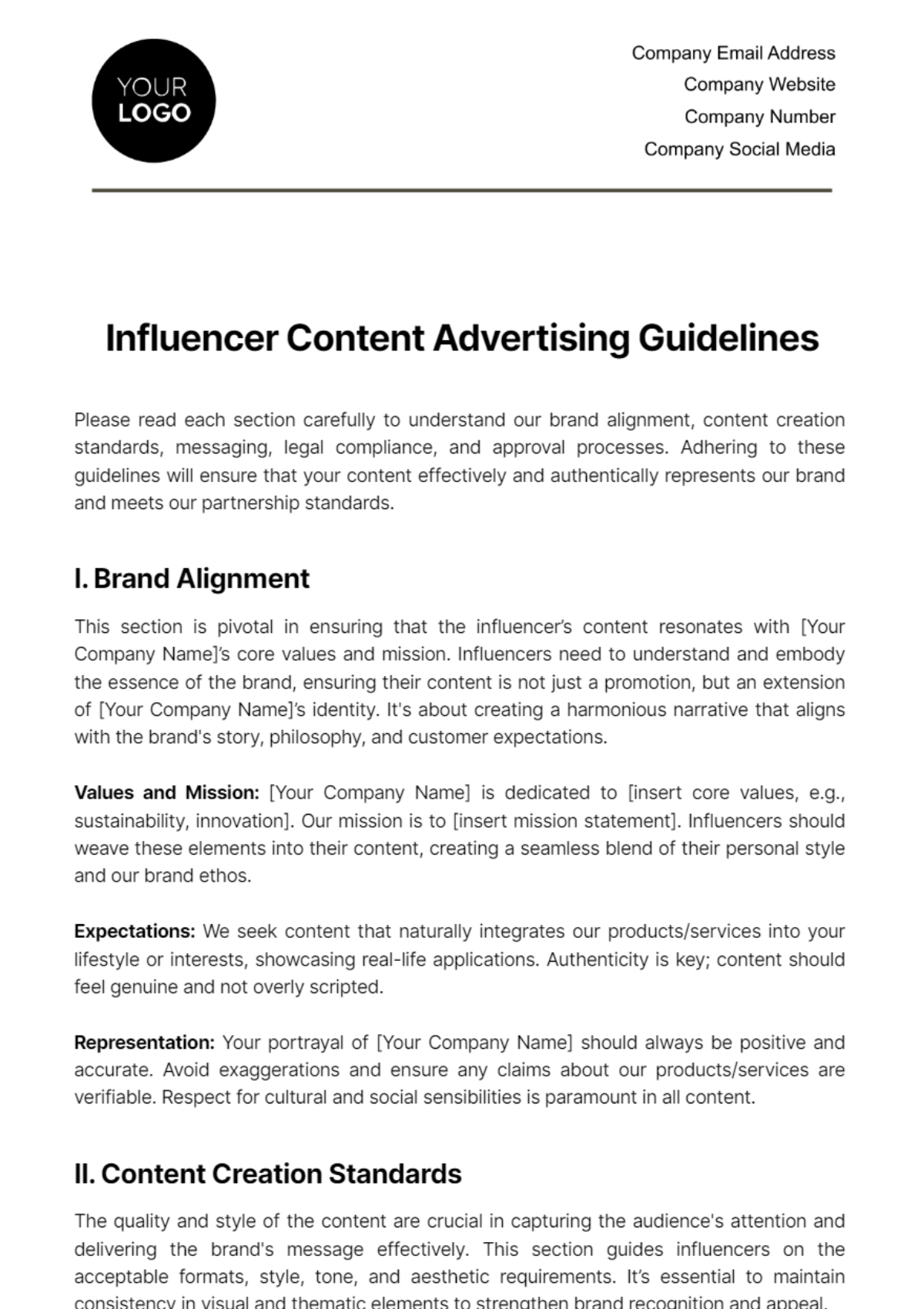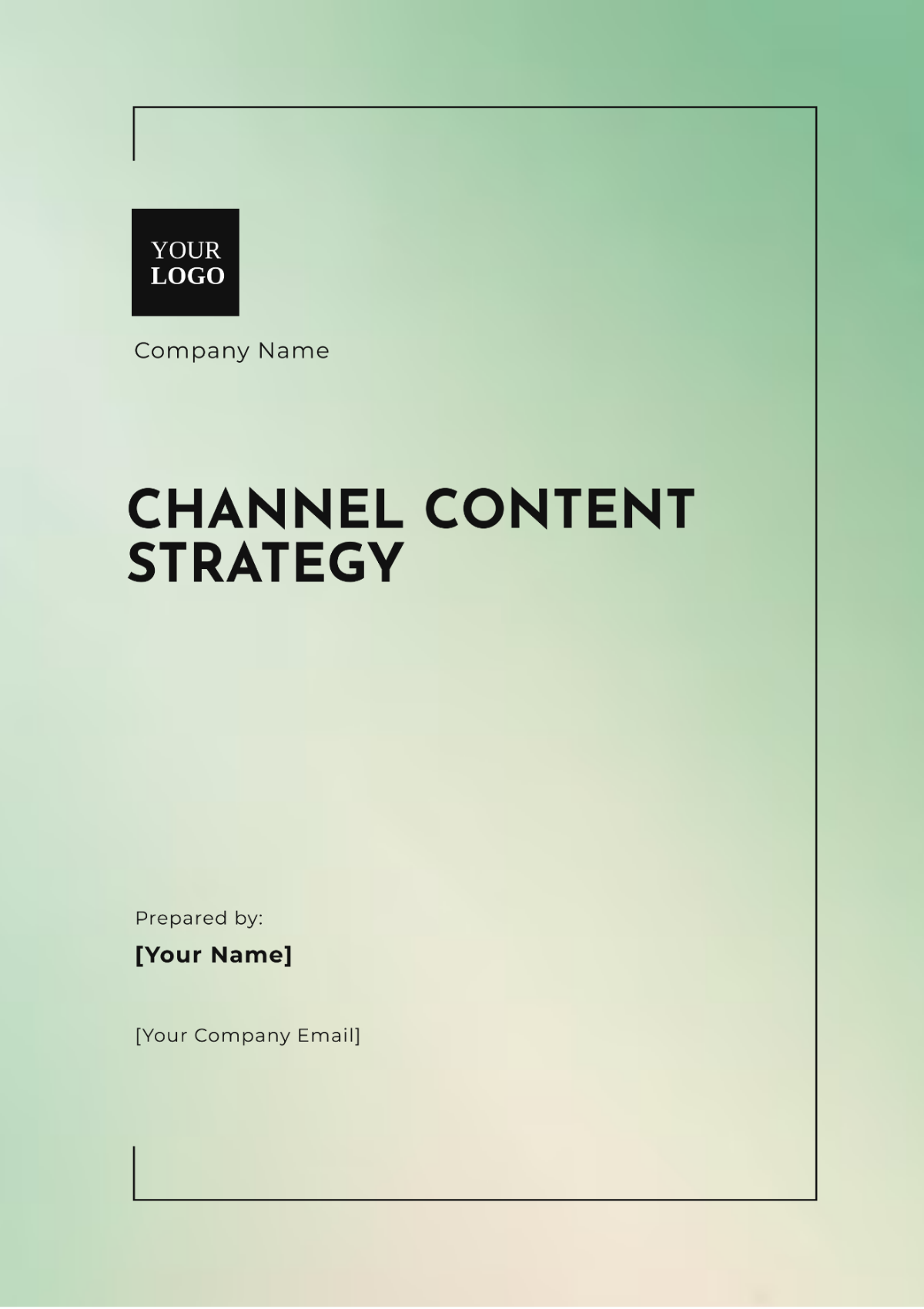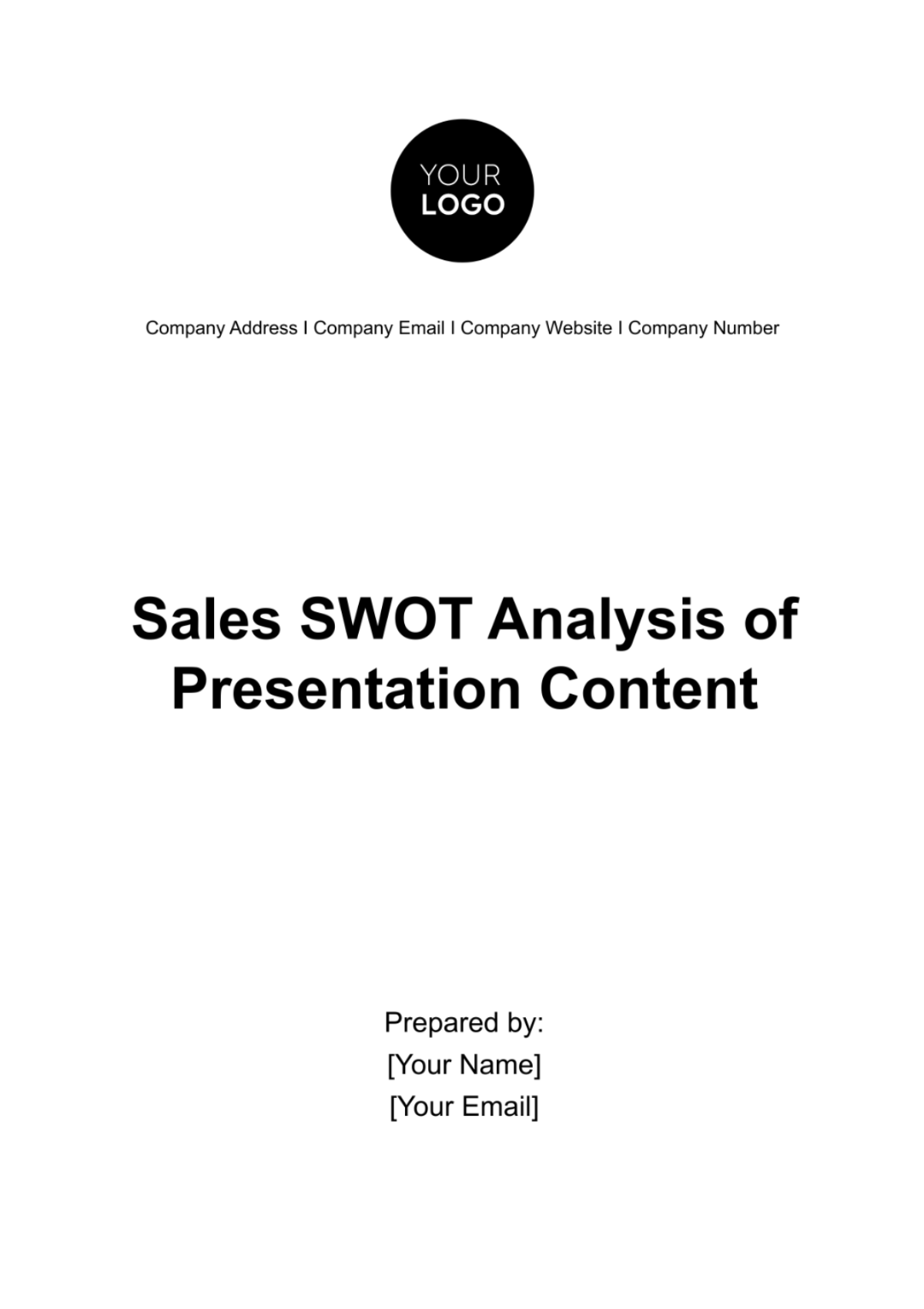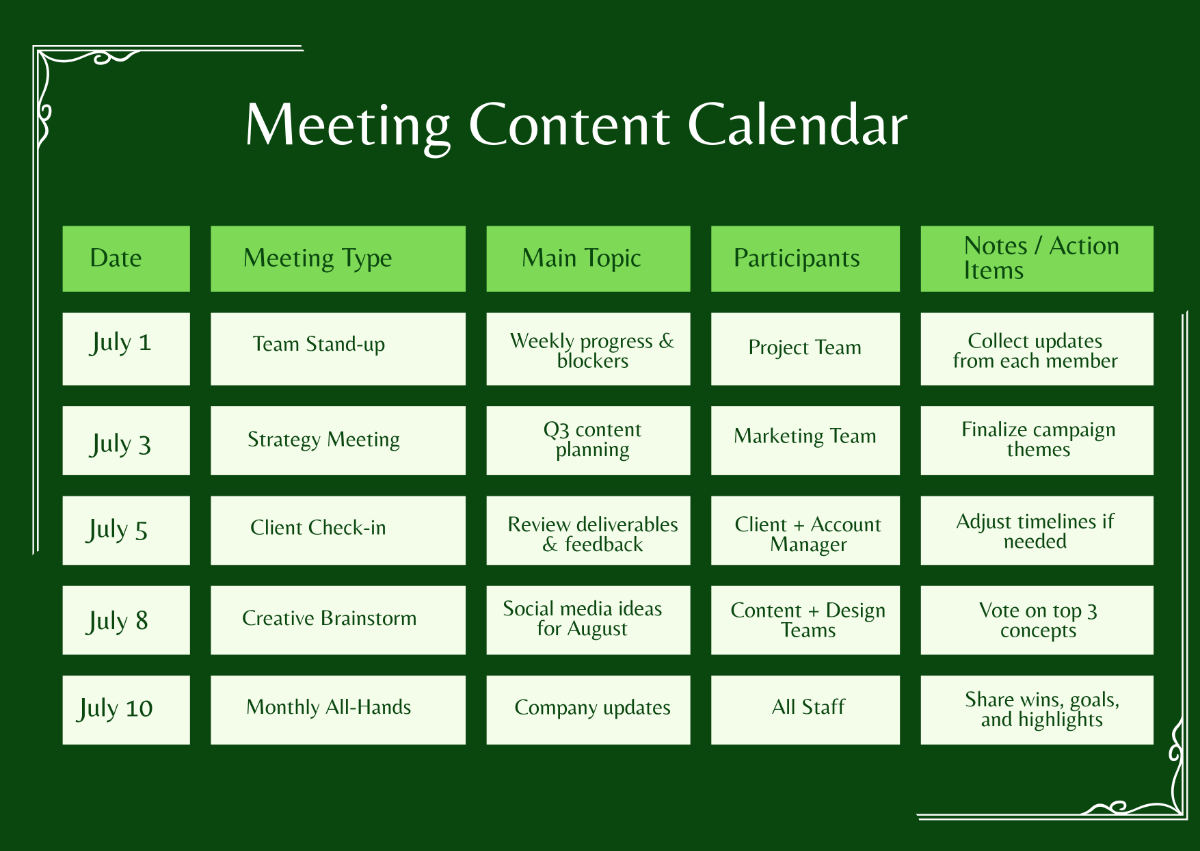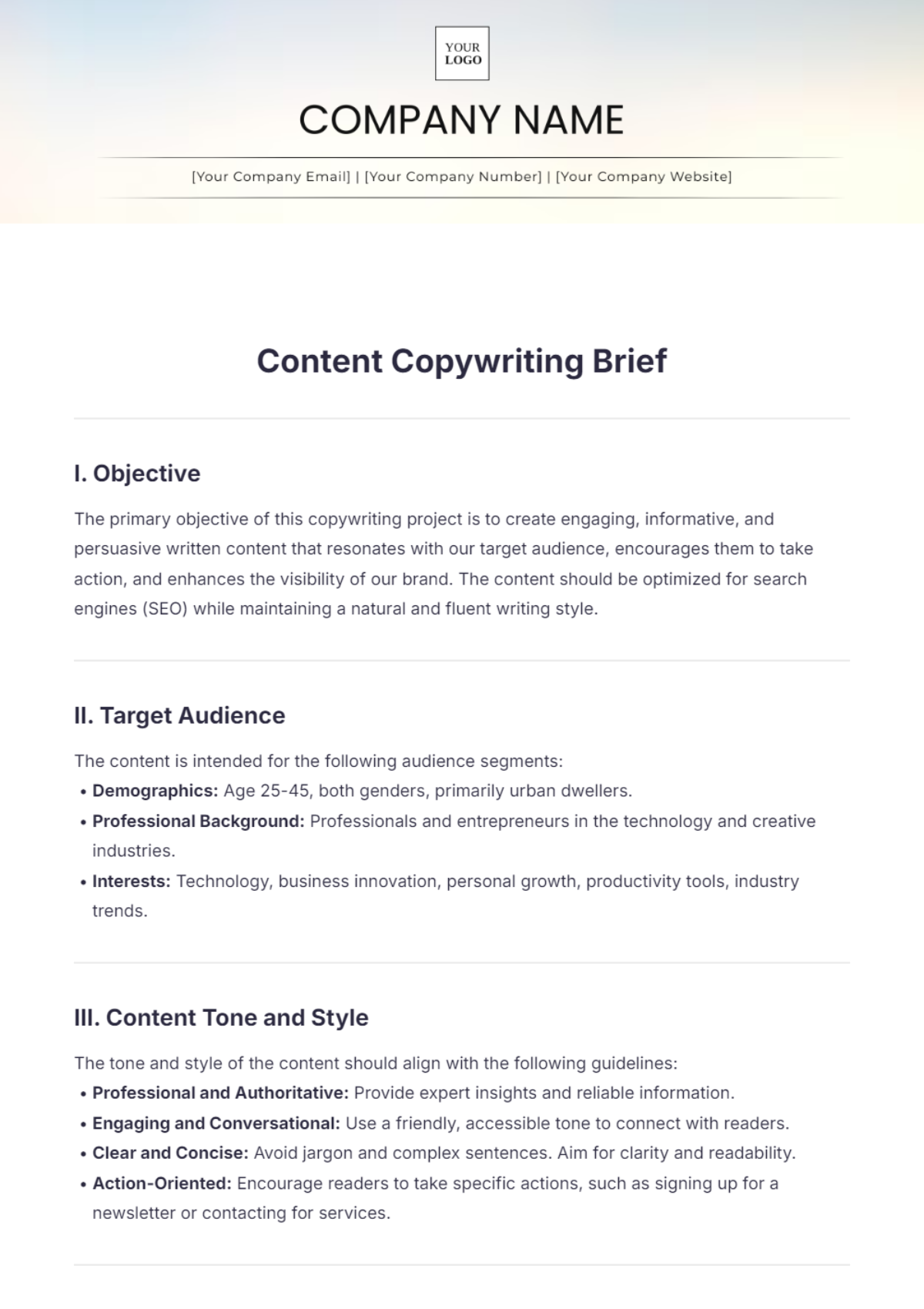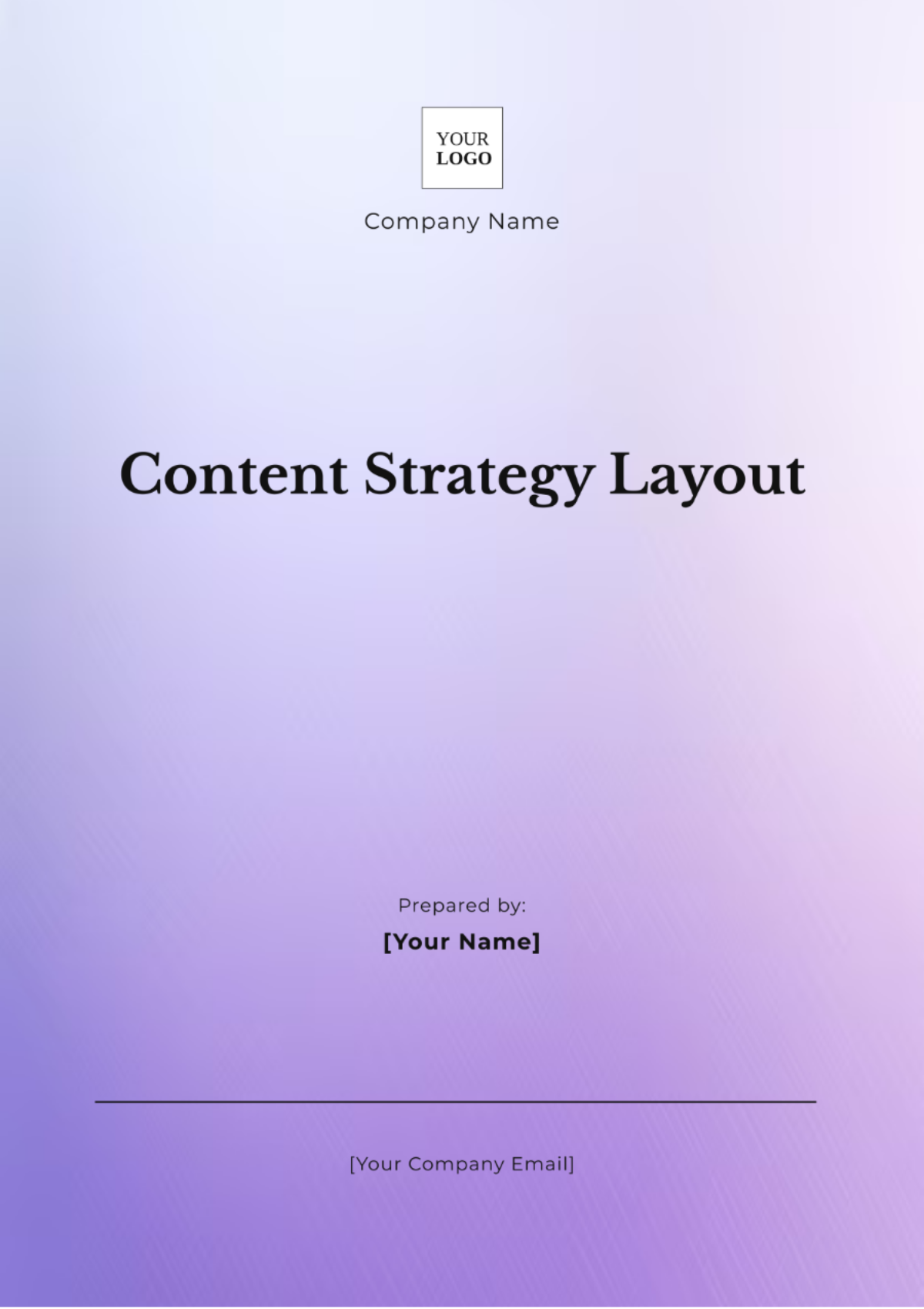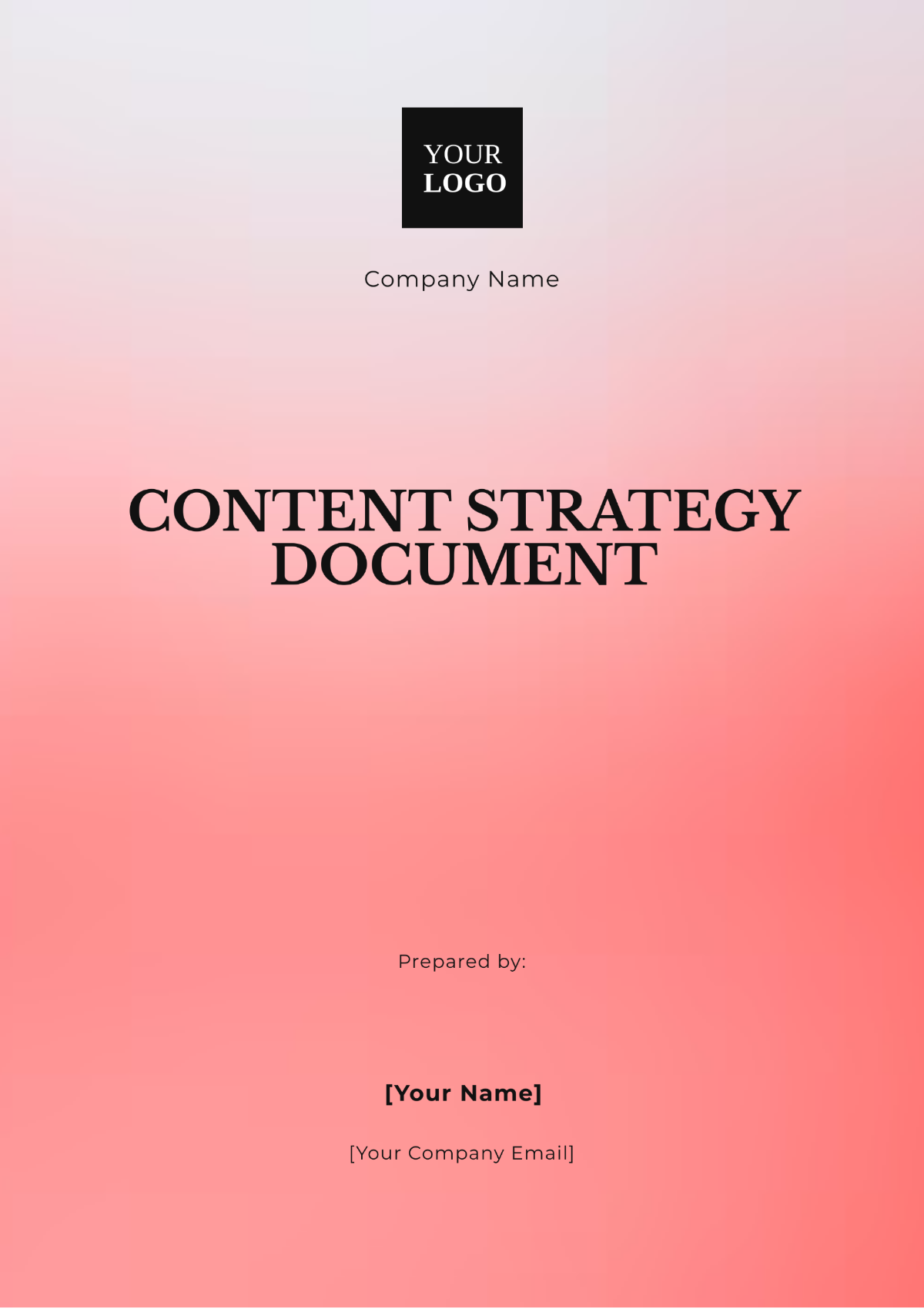Content Pillar Strategy
Prepared by: [Your Name]
Overview
A Content Pillar Strategy is designed to create a structured approach to content creation, focusing on core themes that drive engagement and authority in a particular subject area. This template outlines the key components and steps for developing an effective Content Pillar Strategy.
Objectives
Establish core content themes: Identify primary topics that align with your brand's expertise and audience interests.
Enhance SEO and user experience: Create a content structure that improves search engine rankings and provides valuable information to users.
Drive content engagement: Develop a strategy that promotes interaction and keeps the audience engaged with your brand.
Key Components
1. Define Core Topics
Objective: Identify and define the main topics around which your content will revolve.
Steps:
Analyze audience interests and pain points.
Review industry trends and competitor content.
Select 3-5 core topics relevant to your brand.
Example Table:
Core Topic | Description | Target Audience |
|---|---|---|
Digital Marketing | Strategies for online marketing and SEO. | Marketing Professionals |
Content Creation | Best practices for creating engaging and valuable content. | Content Creators |
Social Media | Tips and strategies for effective social media management. | Social Media Managers |
2. Develop Pillar Content
Objective: Create comprehensive, in-depth content pieces that cover each core topic extensively.
Steps:
Research and outline pillar content for each core topic.
Develop long-form content that provides valuable insights.
Include multimedia elements (e.g., images, videos) to enhance engagement.
Example List:
Digital Marketing Pillar Post: "Ultimate Guide to Digital Marketing: Strategies and Best Practices"
Content Creation Pillar Post: "How to Create High-Quality Content That Resonates with Your Audience"
Social Media Pillar Post: "Social Media Management: Tips for Growing Your Brand Online"
3. Create Supporting Content
Objective: Develop supplementary content that links back to your pillar content and supports the main topics.
Steps:
Identify subtopics and questions related to each core topic.
Create blog posts, infographics, and videos that address these subtopics.
Ensure each piece of supporting content links back to the relevant pillar content.
Example Table:
Pillar Content | Supporting Content | Format |
|---|---|---|
Digital Marketing | "10 SEO Tips to Improve Your Website Ranking" | Blog Post |
Content Creation | "How to Craft the Perfect Blog Post: A Step-by-Step Guide" | Infographic |
Social Media | "Top 5 Social Media Tools for Efficient Management" | Video |
4. Optimize and Promote
Objective: Enhance the visibility and reach of your content pillar strategy through optimization and promotion.
Steps:
Implement SEO best practices (e.g., keyword optimization, meta descriptions).
Promote pillar and supporting content through social media, email newsletters, and other channels.
Monitor performance and adjust strategies based on analytics.
Example List:
SEO Optimization: Use keyword-rich titles and meta descriptions.
Promotion: Share pillar posts on social media platforms and include them in email marketing campaigns.
Monitoring: Track engagement metrics and adjust content strategies as needed.
Conclusion
A well-structured Content Pillar Strategy can drive significant results by focusing on core topics, creating valuable content, and ensuring effective promotion. By following this template, you can establish a solid foundation for your content marketing efforts and achieve greater engagement and authority in your industry.
For more information, please contact [Your Name] at [Your Email].
